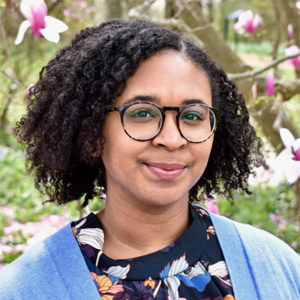Reflecting on Critical Conversations: Decorative Arts and Addressing Diversity, Equity, and Inclusion
by Elizabeth Humphrey, Curatorial Assistant and Manager of Student Programs at the Bowdoin College Museum of Art
Critical Conversations is a new quarterly panel discussion offered by the Decorative Arts Trust to consider pressing topics and concerns facing our society. The inaugural lecture tackled the decorative arts field as it relates to issues of diversity, equity, and inclusion. It is hard to distill such a broad subject down to an hour-long program. However, my main objective was to facilitate a conversation that would prompt continued dialogue and action around the issues discussed.
In selecting the panelists for the discussion, it was necessary to highlight people in the field already wrestling with these issues in their curatorial and interpretive practices. We chose people from institutions with large and well-known decorative arts collections. This group ultimately included Dennis Carr, the Virginia Steel Scott Chief Curator of American Art at the Huntington Library, Art Museum, and Botanical Gardens; Nonie Gadsden, the Katharine Lane Weems Senior Curator of American Decorative Arts and Sculpture at the Museum of Fine Arts, Boston; Joanne Hyppolite, Supervisory Curator of the African Diaspora at the National Museum of African American History and Culture (NMAAHC); and Alyce Perry Englund, Assistant Curator of American Decorative Arts at the Metropolitan Museum of Art.
Developing the questions for the program was extremely difficult. I wanted to be sure we covered topics that viewers expected us to discuss in the short amount of time we had. I decided to focus the questions on the inclusive practices the panelists employed over their careers, how their institutions were dealing with gaps in their collections, and how the decorative arts field could work towards more inclusive research, recruiting, and opportunities. The insight that the panelists shared during the program was valuable for those seeking new strategies or ways of thinking in their careers and institutions.
When thinking about how the panelists have sought to highlight more non-Eurocentric stories, Dennis reminded us of the importance of institutions partnering with community organizations. He spoke to the relationships The Huntington has established with galleries and art centers across Los Angeles, such as the Underground Museum, as a way of amplifying work that celebrated artists of color. Alyce reminded us of the importance of interpretation, calling our attention to the work she has doneto reveal nuanced stories of enslaved people’s experiences through the standard installation of period rooms.
In thinking about the power of collections and acquisition practices, Joanne spoke to the power of community in building the NMAAHC’s collection. The material culture found within these private spaces only revealed that there were more histories and objects to be folded into a museum’s collection. Nonie also reminded us that the collections already featured at an institution had many stories that they could tell already–one needed to expand their understanding of the objects’ social history to extrapolate new meanings.
There was an interesting discussion of the relationship between folk art and decorative arts, with all the panelists preferring to use other terms such as “vernacular artists” instead of “folk art.” In Joanne’s curatorial practice, for example, the designations “folk art” and “decorative arts” do not factor in her work. Instead, she thinks of them as cultural expressions, works inspired by and created within a given culture.
The conversation concluded with the group considering wondering what could be done in the decorative arts to work towards resolutions to racial injustice and lack of equity and inclusion. Dennis felt we should do more to encourage new scholars into the field from diverse backgrounds and to find ways of retaining their interest. This sentiment, as well as creating concrete opportunities for exposure, employment, and experience, were shared by Alyce and Nonie as well. Joanne encouraged us to hold our institutions accountable for their efforts to be more inclusive, reminding us that data and metrics offer a concrete way of ensuring this accountability.
In a short amount of time, the conversation offered insight into past actions, current strategies, and hopes for the future. The panelists all commented that the decorative arts are experiencing a shift in practice, championed by emerging scholars in the field that are demanding more nuance and inclusivity in the work they produce and the institutions for which they work. We can only hope that this first Critical Conversation sparks subsequent dialogues for change, with all of us working toward creating a more inclusive field in the years to come.
To revisit the program, watch the video on the Trust’s YouTube channel:
Visit the Decorative Arts Trust’s Calendar of Events to learn more about the second program in the Critical Conversations series scheduled for December.
About The Decorative Arts Trust Bulletin
Formerly known as the "blog,” the Bulletin features new research and scholarship, travelogues, book reviews, and museum and gallery exhibitions. The Bulletin complements The Magazine of the Decorative Arts Trust, our biannual members publication.








